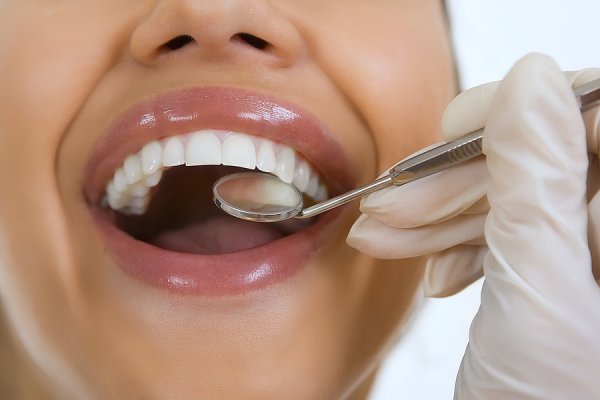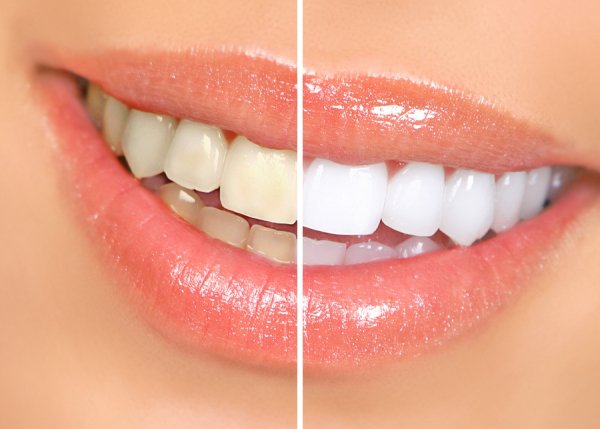-
Spotlight on Single Tooth Replacement

You may think a missing tooth is no big deal; the reality of the situation, however, is that you may experience several consequences if you do not have it replaced by your dentist in a timely fashion. Fortunately, Dr. Spalitto, a dentist in St. Louis , has a great deal of experience in restorative dentistry and is happy to help by placing a dental implant. Continue reading if you would like to learn about the benefits and process involved in a single tooth replacement.
Whether you are missing all of your teeth, some of your teeth, or just one of your teeth, replacement is important. Replacing a missing tooth allows healthy neighboring teeth to stay in the right position rather than shifting into the newly opened gap. It also helps your jaw retain bone mass. Dental implant placement is a common dental procedure that aims to replace your natural tooth with a similar prosthetic one, root and all. After your dentist installs the implant into your jaw, he will cover it with a dental crown so you can enjoy an efficient replacement tooth.
-
Understanding Your Teeth Whitening Options

If your teeth have lost their shine over the years and you would like to enjoy a bright smile once again, you may be interested in teeth whitening treatment. Dr. Spalitto, a skilled dentist in St. Louis, is happy to help you achieve a smile that looks as healthy and youthful as ever. Teeth whitening treatment is among the least invasive and simplest treatments that dentistry has to offer. Read on for help in understanding your teeth whitening options.
In-Office Whitening Procedures
Many people are unaware that a teeth whitening procedure is an available treatment at all until they meet with their dentists to find out how they can enjoy a brighter smile. If you have never whitened your teeth before, you may want to do so under supervision from a dentist in order to ensure optimal results. Procedures conducted in the dentist’s office may also make use of more powerful products and yield more noticeable results than those you could perform yourself. Your dentist can protect your gums with a special guard to ensure that these powerful products are applied only to your teeth. He or she can also use a heat source to catalyze the teeth whitening process.Home Whitening
If you decide to whiten your teeth at home, you will not use the same products or approach that your dentist would use in the office. Instead, you will typically use a mouthpiece tray that he has created specifically for your teeth. You will add a whitening gel to your custom mouthpiece tray and wear it for a few hours each day. The tray should keep the whitening agent away from your gums since it has been customized for your mouth. You can also find over-the-counter whitening kits at convenience stores, but they may not fit or work as well.Whitening Strips
Another form of teeth whitening treatment is whitening strips. You can apply these gel-coated strips to your teeth twice each day for 30 minutes at a time. After about two weeks, you should experience the end result, which will typically last for about four months afterwards. -
How to Brush Your Teeth
When you visit Dr. Spalitto, your dentist in St. Louis , he will screen you for an array of complications, clean your teeth, and evaluate your need for dental restorations like root canals or tooth extractions. It is important, however, to understand how to brush your teeth properly outside of the dentist’s office. Watch this video for an overview of how to brush your teeth.Brushing your teeth is the cornerstone of dental hygiene, and yet many people are misinformed about the proper techniques. Whether you use a power brush or a manual brush, you should brush your teeth twice each day. Hold your toothbrush at a 45-degree angle to your gums and gently brush away from the gums on each section of your teeth. You should spend 30 seconds on each of the 4 quadrants of your mouth.
-
Dental Implants for Denture Patients

There are a few different ways you can go about treating missing teeth. Many individuals seek dental implants in St. Louis from a dentist such as Dr. Spalitto of West County Dental, while others prefer to go with the more traditional route of conventional dentures. While each of these forms of treatment has its own benefits and drawbacks, some people may be interested in a combination of the two—implant-supported dentures. Keep reading if you are interested in learning more about dental implants for denture patients.
Dentures
In the past, a set of dentures was the go-to treatment for people who had missing teeth. This treatment allows individuals to go from having zero teeth to having a full set of prosthetics in a short amount of time. With the proper fit and adhesive, those who wear dentures can enjoy a successful treatment that improves their appearance and restores function. This treatment plan does come with drawbacks, however. Proper fit and adhesive can help, but they are not always so easy to achieve. Dentures may become ill fitting over time, and it may be a while before the wearer realizes that this has occurred. They may also slip around or fall out of your mouth without the proper adhesive.Implants
Dental implants can effectively revitalize your teeth, gums, jaw, and even facial appearance. During this treatment, your dentist will place an implant in your jawbone with a post that protrudes through your gums. You will then receive a cap or dental crown to place on the end of the post. This procedure provides patients with effective prosthetic teeth that do not move around or lose their fit.Implant-Supported Dentures
Those who cannot help but seek the best of both worlds may be interested in implant-supported dentures. Using just a few implants, your dentist can offer you a permanent denture that will stay perfectly still in your mouth. This means that you will not have trouble chewing your food or having a conversation with your friends and family. Your dentist will typically place the implants in the front of your jawbone, where there tends to be more mass.
RECENT POSTS
categories
- Uncategorized
- crowns
- dental veneers
- dentists
- full service dental practice
- porcelain veneers
- same day crowns
- Dental Cosmetic Surgery
- Dental Implants
- Dentistry
- Dentist Review
- Laser Dentistry
- Root Canal
- Sedation Dentistry
- Dentures
- Cleanings
- Teeth Whitening
- Abscessed Teeth
- Cosmetic Dentistry
- Infographic
- Cavities
- Sealants
- Gum Recession
- Periodontal Disease
- Dental Health
- Family Dentistry
- Dental Emergency
- Invisalign
- Filling
- Same Day Dental Procedures
- Gum disease
- Sleep Apnea
Archives
2022
2021
- December (2)
- November (1)
- October (3)
- September (2)
- August (2)
- July (2)
- June (2)
- May (2)
- April (2)
- March (2)
- January (2)
2020
2016
2015
- December (4)
- November (3)
- October (3)
- September (4)
- August (4)
- July (4)
- June (4)
- May (3)
- April (3)
- March (4)
- February (5)
- January (6)

